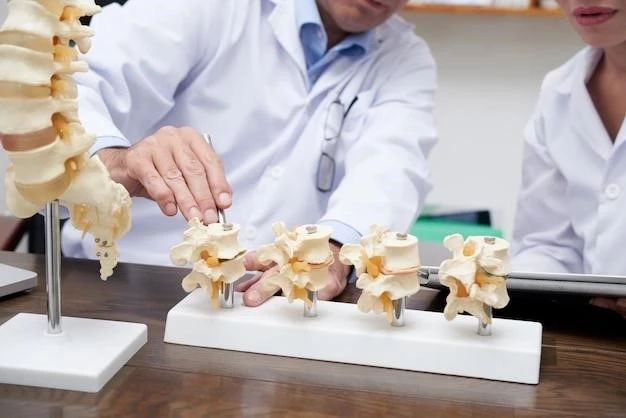Article Plan⁚ Disease ⸺ Progressive Spinal Muscular Atrophy
Introduction to Progressive Spinal Muscular Atrophy (SMA)
Spinal muscular atrophy (SMA) is a neuromuscular disease characterized by muscle weakness and atrophy due to the progressive degeneration of lower motor neurons in the spinal cord and brain stem nuclei. It affects individuals of varying ages‚ with a symmetrical and progressive weakening of muscles. SMA is caused by genetic mutations impacting the survival motor neuron 1 (SMN1) gene‚ crucial for motor neuron function. The disease has different subtypes based on age of onset and severity.
Clinical Manifestations of Progressive SMA
Spinal muscular atrophy (SMA) presents with various clinical manifestations‚ including progressive muscle weakness and atrophy due to the degeneration of lower motor neurons in the spinal cord and brain stem nuclei. Individuals may exhibit symmetrical weakness‚ affecting proximal and distal muscles. SMA can lead to difficulties in breathing‚ swallowing‚ and motor function‚ impacting daily activities. Early diagnosis and management play a crucial role in addressing the symptoms and improving quality of life for patients.
Genetic Basis of Progressive SMA
Spinal muscular atrophy (SMA) is primarily a genetic disorder‚ caused by mutations affecting the survival motor neuron 1 (SMN1) gene‚ crucial for motor neuron function. Individuals with SMA have a deficiency in the production of survival motor neuron (SMN) protein‚ leading to the degeneration of lower motor neurons in the spinal cord and brain stem nuclei. Understanding the genetic basis of SMA is essential for accurate diagnosis‚ genetic counseling‚ and potential therapeutic interventions.

Types of Progressive SMA
Spinal muscular atrophy (SMA) is categorized into different types based on the age of onset and severity of symptoms. The main types include⁚
- Type 1 (Werdnig-Hoffmann disease)⁚ The most severe form diagnosed in infants.
- Type 2⁚ Usually diagnosed in early childhood with moderate symptoms.
- Type 3⁚ Onset in childhood or adolescence with milder symptoms.
- Type 4 (adult-onset SMA)⁚ Symptoms appear in adulthood with varying severity.
Understanding the different types is crucial for proper diagnosis‚ treatment‚ and management strategies tailored to each individual’s specific needs.
Diagnosis and Testing for Progressive SMA
Diagnosing progressive spinal muscular atrophy (SMA) involves a combination of clinical evaluation‚ genetic testing‚ and specialized diagnostic procedures. Physicians may perform physical exams to assess muscle weakness‚ electromyography (EMG) to evaluate electrical activity in muscles‚ and genetic testing to identify mutations in the survival motor neuron 1 (SMN1) gene. Additionally‚ imaging studies like MRI or muscle biopsies may be conducted to aid in diagnosis. Early and accurate diagnosis is crucial for implementing appropriate treatment strategies and support for individuals with SMA.
Treatment Options for Progressive SMA

Management of progressive spinal muscular atrophy (SMA) involves a multidisciplinary approach to address the diverse symptoms and challenges faced by individuals with SMA; Treatment options include⁚
- Physical Therapy⁚ Helps maintain muscle strength and mobility.
- Respiratory Support⁚ May include breathing exercises or mechanical ventilation.
- Nutritional Support⁚ Ensures adequate caloric intake and addresses swallowing difficulties.
- Medications⁚ Such as nusinersen or gene therapy for specific SMA types.
- Surgical Interventions⁚ In severe cases to address scoliosis or joint contractures.
Individualized treatment plans should be developed in consultation with healthcare providers specializing in neuromuscular disorders to optimize quality of life and overall well-being for those affected by SMA.
Research Advances in Progressive SMA
Ongoing research into progressive spinal muscular atrophy (SMA) has led to significant advancements in understanding the disease’s genetic basis‚ pathophysiology‚ and potential treatment options. Scientists have made breakthroughs in gene therapy‚ SMN1 gene editing techniques‚ and innovative drug developments targeting motor neuron preservation. These advances offer hope for improved therapies and interventions to slow disease progression and enhance the quality of life for individuals with SMA. Staying informed about the latest research findings and clinical trials can be beneficial for patients‚ caregivers‚ and healthcare providers involved in managing SMA.
Impact of Progressive SMA on Patients
The impact of progressive spinal muscular atrophy (SMA) on individuals can be profound‚ affecting various aspects of their daily lives. The progressive muscle weakness and atrophy can lead to challenges in mobility‚ self-care tasks‚ and overall independence. Patients may experience difficulties with breathing‚ swallowing‚ and other vital functions‚ impacting their quality of life. The emotional and social impact of living with SMA‚ along with the need for specialized care and support‚ can significantly influence individuals and their families. Seeking comprehensive care and support systems is essential for managing the multifaceted impact of SMA;
Prognosis and Life Expectancy in Progressive SMA
The prognosis and life expectancy in progressive spinal muscular atrophy (SMA) vary depending on the subtype‚ age of onset‚ and disease progression. Infants with severe SMA Type 1 may have a shorter life expectancy‚ often not achieving independent sitting and facing respiratory failure before the age of two. In contrast‚ adults with SMA may experience muscle weakness but have a normal life expectancy and can remain ambulatory. Treatment and care aimed at managing symptoms and supporting overall well-being can positively impact the prognosis for individuals with SMA.
Comparison with Other Motor Neuron Diseases
When comparing spinal muscular atrophy (SMA) with other motor neuron diseases‚ it is crucial to understand the distinct characteristics of each condition. SMA specifically involves the progressive degeneration of lower motor neurons in the spinal cord and brain stem nuclei‚ resulting in muscle weakness and atrophy. In contrast‚ other motor neuron diseases like amyotrophic lateral sclerosis (ALS) may affect upper motor neurons in addition to lower motor neurons. Each disease presents unique challenges and treatment approaches. Consulting healthcare professionals for a precise diagnosis and tailored management plan is essential for patients with motor neuron diseases.
Management of Symptoms in Progressive SMA
When it comes to managing symptoms in progressive spinal muscular atrophy (SMA)‚ a coordinated approach involving healthcare providers specializing in neuromuscular disorders is essential. Symptomatic management often includes⁚
- Physical Therapy⁚ To maintain muscle strength and flexibility.
- Respiratory Support⁚ Addressing breathing difficulties through techniques or equipment.
- Nutritional Support⁚ Ensuring adequate caloric intake and addressing swallowing challenges.
- Medications⁚ Such as disease-modifying therapies or symptom-specific drugs.
- Mental Health Support⁚ Managing emotional well-being for patients and families.
Individualized care plans catered to the specific needs of each patient can improve quality of life and help individuals cope with the challenges associated with SMA.
Supportive Care for Patients and Families
Supportive care for individuals with progressive spinal muscular atrophy (SMA) is essential to address the complex needs of patients and their families. Providing a comprehensive support system involves⁚
- Emotional Support⁚ Offering counseling and resources to cope with the emotional impact of SMA.
- Educational Support⁚ Providing information about the disease‚ treatment options‚ and available resources.
- Community Resources⁚ Connecting families with support groups and organizations specializing in SMA.
- Respite Care⁚ Arranging temporary relief for caregivers to prevent burnout.
- End-of-Life Care Planning⁚ Assisting families in making difficult decisions and providing compassionate care.
Ensuring access to supportive care services can help improve the overall well-being and quality of life for individuals living with SMA and their families.
Coping Strategies for Individuals with Progressive SMA
Coping with progressive spinal muscular atrophy (SMA) can be challenging‚ both physically and emotionally. Implementing effective coping strategies can help individuals navigate the impact of the disease. Some strategies may include⁚
- Support Groups⁚ Connecting with others facing similar challenges can provide emotional support and a sense of community.
- Healthy Lifestyle Choices⁚ Maintaining a balanced diet‚ staying active within personal limits‚ and engaging in activities that bring joy.
- Mind-Body Techniques⁚ Practices like meditation‚ relaxation exercises‚ and mindfulness can help manage stress and improve mental well-being.
- Open Communication⁚ Sharing feelings and concerns with loved ones and healthcare providers can foster understanding and support.
- Adaptive Equipment⁚ Using assistive devices and making modifications to living spaces can enhance independence and daily functioning.
Exploring coping mechanisms and finding what works best for each individual can contribute to a more positive outlook and improved quality of life while living with SMA;
Advocacy and Awareness Initiatives for Progressive SMA
Advocacy and awareness initiatives play a crucial role in promoting understanding‚ support‚ and resources for individuals affected by progressive spinal muscular atrophy (SMA). Engaging in advocacy efforts can help raise awareness about the challenges faced by those living with SMA and advocate for access to specialized care‚ research funding‚ and support services. Participation in awareness campaigns‚ fundraising events‚ and support groups can not only empower individuals with SMA and their families but also contribute to broader efforts to improve treatment options and quality of life for those affected by the disease.
